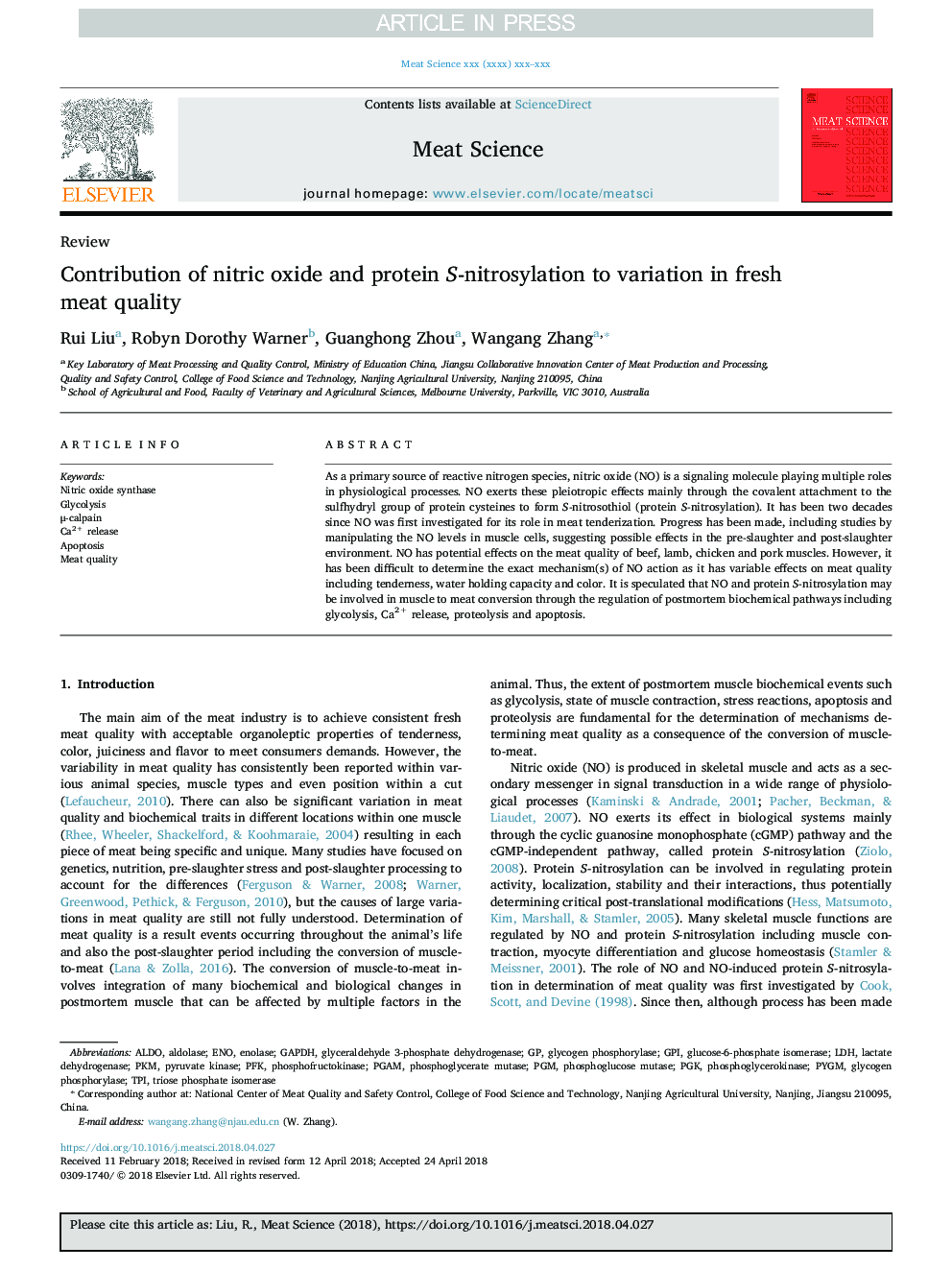| Article ID | Journal | Published Year | Pages | File Type |
|---|---|---|---|---|
| 8502567 | Meat Science | 2018 | 14 Pages |
Abstract
As a primary source of reactive nitrogen species, nitric oxide (NO) is a signaling molecule playing multiple roles in physiological processes. NO exerts these pleiotropic effects mainly through the covalent attachment to the sulfhydryl group of protein cysteines to form S-nitrosothiol (protein S-nitrosylation). It has been two decades since NO was first investigated for its role in meat tenderization. Progress has been made, including studies by manipulating the NO levels in muscle cells, suggesting possible effects in the pre-slaughter and post-slaughter environment. NO has potential effects on the meat quality of beef, lamb, chicken and pork muscles. However, it has been difficult to determine the exact mechanism(s) of NO action as it has variable effects on meat quality including tenderness, water holding capacity and color. It is speculated that NO and protein S-nitrosylation may be involved in muscle to meat conversion through the regulation of postmortem biochemical pathways including glycolysis, Ca2+ release, proteolysis and apoptosis.
Keywords
PGAMPKMenolaseGPiPGMeNOPFKPGKμ-CalpainTPIPYGMGAPDHCa2+ releaseAldoAldolaseApoptosisTriose phosphate isomerasePhosphofructokinasephosphoglycerate mutaselactate dehydrogenaseLDHnitric oxide synthasepyruvate kinaseMeat qualityGlucose-6-phosphate isomeraseglyceraldehyde 3-phosphate dehydrogenaseGlycolysisGlycogen phosphorylase
Related Topics
Life Sciences
Agricultural and Biological Sciences
Food Science
Authors
Rui Liu, Robyn Dorothy Warner, Guanghong Zhou, Wangang Zhang,
